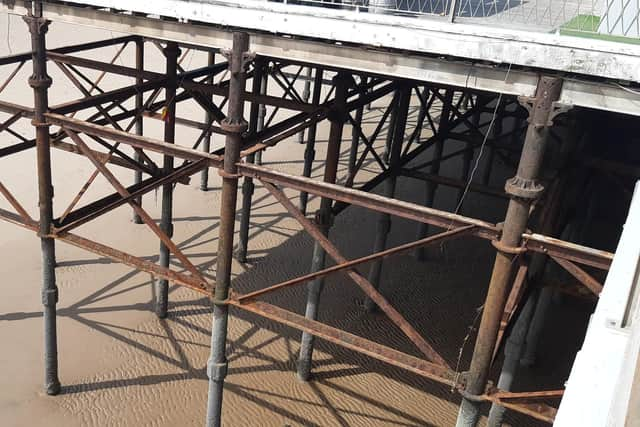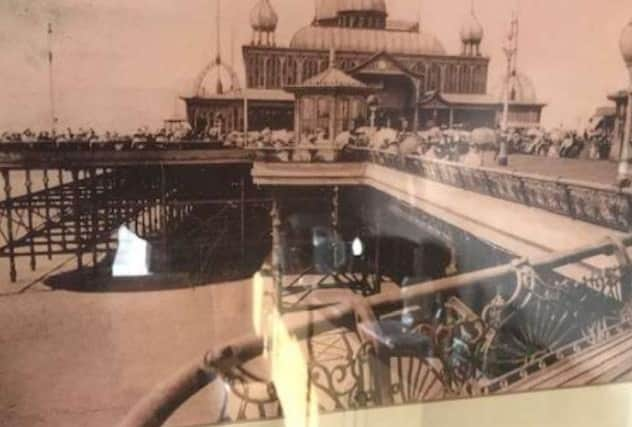Blackpool's historic piers face threat from disappearing sand
and live on Freeview channel 276
The owners warn sand reduction around the steel footings of North, Central and South Piers has accelerated in the last 15 years.
And while there is no immediate threat, the Blackpool Pier Company says action is needed now to prevent further significant decline in sand levels.
Advertisement
Hide AdAdvertisement
Hide AdThey have purchased their own equipment, including a bulldozer, to haul sand back onto the beaches and protect the foundations.


The company also wants to work with Blackpool Council which has received £57m from the Environment Agency for the Blackpool Central Area Beach Nourishment Scheme.
This will see sand replaced which has been washed away from the base of the stepped sea defences, leaving the foundations exposed to erosion.
Mark Marshall, health and safety officer for the Blackpool Pier Company, said: “We have a common interest in ensuring the piers are structurally sound by maintaining the correct sand levels around the footings.”
Advertisement
Hide AdAdvertisement
Hide AdA recent 3D image of South Pier compared to a photograph of the pier from the time it opened in 1893, shows much more of the steel footings are above beach level.


At the time the piers were built, Victorian engineers built piles into the bedrock below to act as the foundations for the structures.
Surveys show three metres of sand loss at the base of South Pier, 1.5 metres at Central Pier and one metre at North Pier.
But engineers employed by the piers’ owners say the rate of sand loss has accelerated over the last 15 years.
Advertisement
Hide AdAdvertisement
Hide AdIt is estimated at South Pier there has been a loss of one-and-a-half metres since 2007 – which is the same amount as was lost in the preceding 114 years since it was built.


Mr Marshall said: “More sand around the bases of the piers means more weight around the foundations, so losing sand is a significant issue.
“The loss is more significant at South Pier than North Pier, but it is more of a threat to North Pier because the tops of the screw piles are now exposed.
“We will continue to have more sand loss so the best way to resolve it is to manage sand levels. We could put more cross bracing in the lower levels of the steelwork but that would cost millions of pounds.”
Advertisement
Hide AdAdvertisement
Hide AdHe added: “The council has an interest in ensuring the beach levels so the sea defences are maintained and flood protection remains intact.
“We feel there is a good opportunity for us to pool resources and equipment to assist both agendas being met.”
Investment has also been continuing in the commercial side of the piers including a new Sports Bar on South Pier, refurbished outdoor areas and a new adrenaline ride.
The famous big wheel on Central Pier was refurbished in 2022, while the Bloom Bar is a recent addition to North Pier.
Mr Marshall said: “We are investing in the commercial side, and expertise in maintenance and safety is being built into the design.”
Advertisement
Hide AdAdvertisement
Hide AdThe beach replenishment project proposals include construction of 16 fishtail rock headlands or groynes, each 100 metres in length, at 100 metre intervals to disperse waves and prevent erosion.
A council report says this would “reduce the recently identified long term trend of beach lowering.”